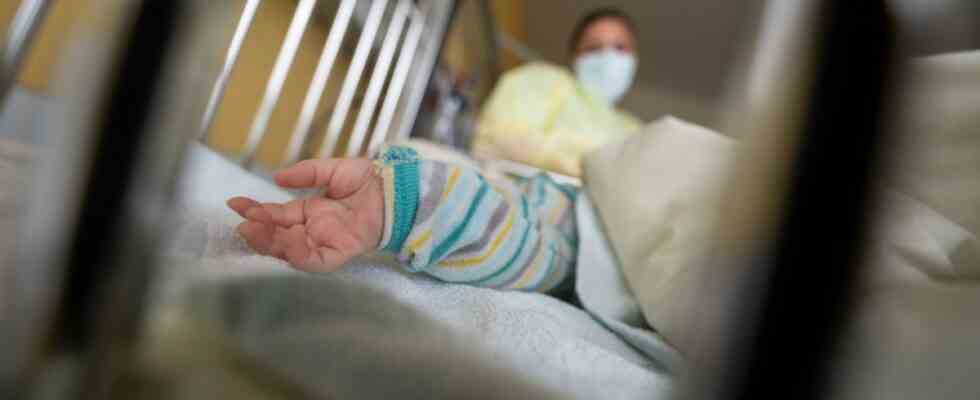There are currently hardly any free beds in German children’s hospitals. This is shown by a survey by the German Interdisciplinary Association for Intensive Care and Emergency Medicine (DIVI). “Out of 110 children’s hospitals, 43 facilities did not have a single bed free on the normal ward. There are only 83 free beds in pediatric children’s intensive care units throughout Germany – that’s 0.75 free beds per clinic, i.e. less than one per location”, announced the DIVI. The association wrote to 130 children’s hospitals for the survey. 110 houses had provided their data from the sample day November 24th, i.e. a week ago.
The situation is catastrophic, says Professor Florian Hoffman, Secretary General of DIVI. “That’s why we demand the immediate optimization of working conditions in the children’s hospitals, the establishment of telemedical networks between the pediatric facilities and the establishment of specialized children’s intensive care transport systems. We must finally act now,” the children’s intensive care physician from Munich is quoted as saying. Every second clinic reports that their pediatric intensive care physicians have already had to send patients away again. “This situation is getting worse from year to year and is carried out on the backs of critically ill children,” says Hoffmann.
In addition, the lack of staff is making the situation in the children’s clinics much worse: theoretically, there are over 600 beds in the 110 clinics that took part in the survey. However, only around 370 can be occupied because too few staff are available.
RSV wave earlier and more violent than in previous years
The reason for the currently high utilization is the current RSV wave. Respiratory syncytial virus (RSV) causes serious respiratory infections, particularly in children from birth to four years of age. Most children do not need to be hospitalized. Nevertheless, many who are dependent on treatment with respiratory support remain, says Professor Sebastian Brenner, pediatric intensive care physician at the Dresden University Hospital. “As of today, we can assume that there are not enough children’s intensive care beds for this treatment.”
The virus first affects the upper respiratory tract, where it can cause a dry stimulus. In small children in particular, the pathogen then often spreads to the lower respiratory tract, where the virus infects the bronchioles, the smallest air sacs in the lungs. The inflammation that follows can be very painful and relieved somewhat with oxygen-enriched air. This year and last year, the frequent infections began much earlier than usual. According to experts, many small children would now experience the disease for the first time after the pandemic protective measures. As a result, significantly more children become seriously ill and have to be treated in hospital.
According to DIVI, all children’s hospitals that participate in the nationwide “cloverleaf concept” for patient transfer were written to in the survey. Certain combinations of federal states work together and divide new patients among themselves.

